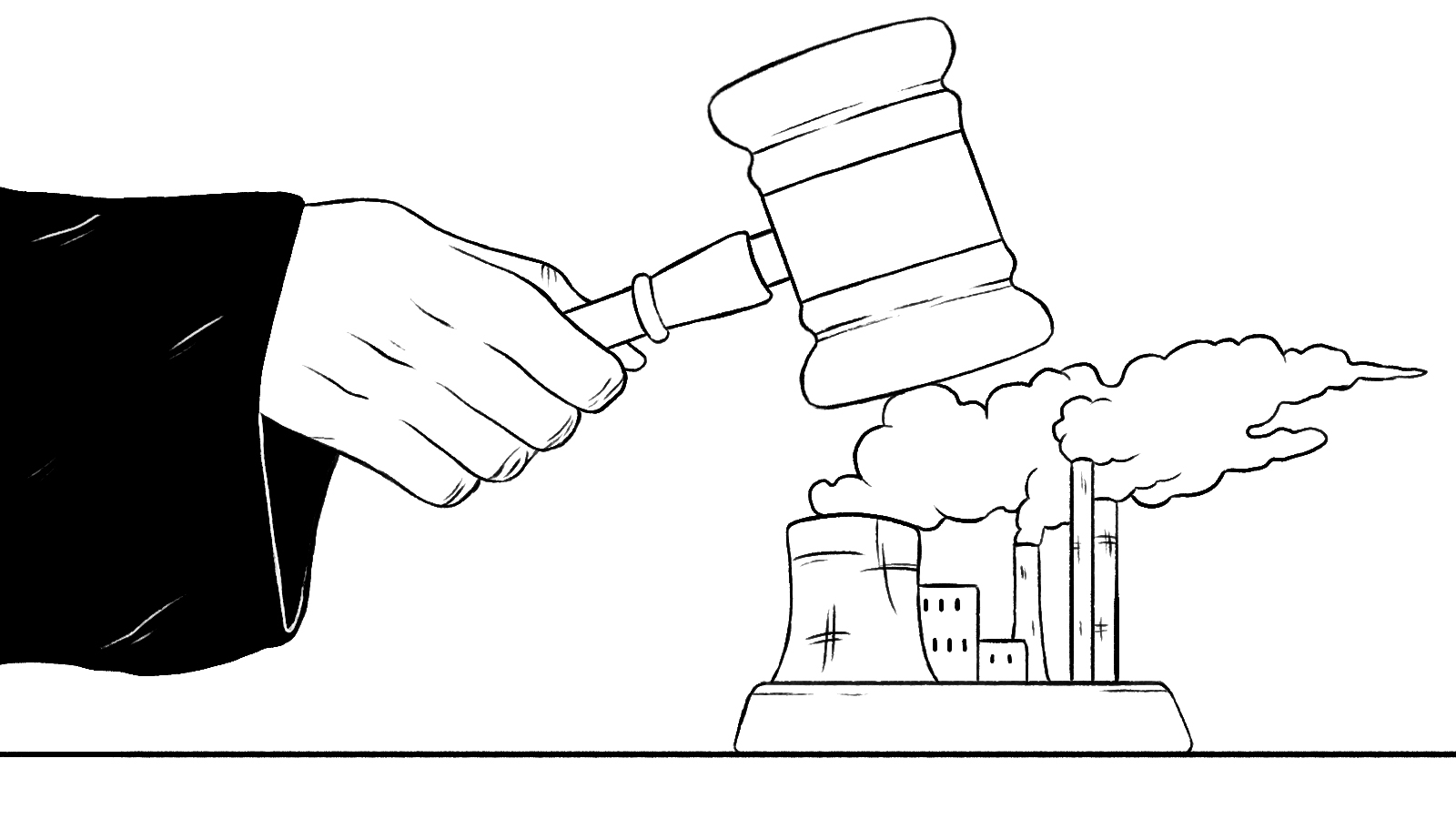One doesn’t typically associate Justice Antonin Scalia with environmental victories, but Monday’s Supreme Court decision in Utility Air Regulatory Group v. Environmental Protection Agency (“UARG”) is just that, albeit with caveats we’ll address below.
Let’s start with the good news. In a 7-2 opinion written by Scalia — and joined by Chief Justice John Roberts, Justice Anthony Kennedy, and the court’s four progressives — the court held that the Environmental Protection Agency may regulate the greenhouse gas emissions of any “major emitting facility” already required to receive a permit under the Clean Air Act’s Prevention of Significant Deterioration (“PSD”) program due to its emission of other air pollutants. According to EPA calculations, this reading of the statute covers roughly 83 percent of stationary sources of greenhouse gas emissions in America.
So, even as this part of the court’s ruling comports only with the EPA’s “fallback” position, this position was still one that Solicitor General Donald Verrilli advanced forcefully in the government’s brief, that drew the most attention during the UARG oral argument earlier this year, and that ultimately led Scalia to concede, while summarizing his UARG decision from the bench, that “E.P.A. is getting almost everything it wanted in this case.” So much for Justice Samuel Alito’s rejoinder in a separate opinion (joined only by Justice Clarence Thomas) that Massachusetts v. EPA — the key case recognizing EPA’s authority to regulate greenhouse gas emissions — was “wrongly decided.” After UARG, Massachusetts v. EPA is still alive and well.
Now, on to the bad news. By a narrow 5-4 vote, the court’s conservatives concluded that the Clean Air Act neither compels nor permits the EPA to adopt an interpretation of the act that triggers the PSD program’s permitting requirements solely because of its greenhouse gas emissions. The PSD program requires stationary sources with emissions of over 100 or 250 tons per year (depending on the type of facility) of “any air pollutant” to obtain a permit before construction or modification. In this part of the court’s opinion — and despite the broad language chosen by Congress (“any air pollutant”) and the court’s previous decision in Massachusetts v. EPA — the court’s conservatives concluded that the phrase “any air pollutant” does not include greenhouse gases for purposes of triggering the PSD program and that EPA’s attempt to tailor the related statutory thresholds to cover the largest emitters of greenhouse gases was impermissible.
While this 5-4 ruling on a key issue is disappointing, it is important again to recognize that the government still won much more than it lost in this case. Put another way, if the government had prevailed in full, the PSD program would have covered approximately 86 percent of stationary sources of greenhouse gases. With Scalia’s split decision in UARG, the PSD program will cover 83 percent of the problem — only 3 percent less than would have been covered in a total victory for the Obama administration. Industry challengers were hoping for 0 percent.
Looking ahead, the big question environmentalists and industry watchers might ask is how today’s ruling will affect subsequent challenges to EPA’s authority to regulate greenhouse gas emissions. Here again the message is basically positive: Massachusetts v. EPA stands, and the court has reaffirmed EPA’s regulatory authority.
But there are a couple of caveats. First, the court’s willingness to find the Clean Air Act’s text of “any air pollutant” ambiguous — despite both the term’s capacious definition and its acceptance in Massachusetts v. EPA — will be cited by industry challengers as evidence that EPA’s authority is limited when it comes to regulating greenhouse gases. In effect, that would be an argument that greenhouse gases are somehow separate and unequal pollutants for purposes of the Clean Air Act. Massachusetts v. EPA makes it clear that this isn’t true, but some of the language in Scalia’s opinion may inspire other last-ditch efforts by industry groups to undermine the government’s authority to address the gravest environmental challenge of our time. Second, in rejecting EPA’s attempt to keep faith with the act’s text and underlying purpose by adjusting the PSD program’s numerical threshold requirements, Scalia appears to define “reasonable” merely in terms of how much the interpretation would increase EPA’s regulatory authority — the more authority for the EPA, the less reasonable the interpretation (or, at least, so some challengers may argue). Again, industry will take heart in the limits drawn by Scalia’s decision and emphasize them in future cases.
Both industry and environmental organizations declared victory on Monday and with some justification for each position. But if industry is being honest, on the core issue in UARG, they won 3 percent of what they asked for and lost the other 97 percent. Environmentalists will take that outcome any time.
Note: The authors work at Constitutional Accountability Center, which filed a brief in favor of EPA in UARG.




